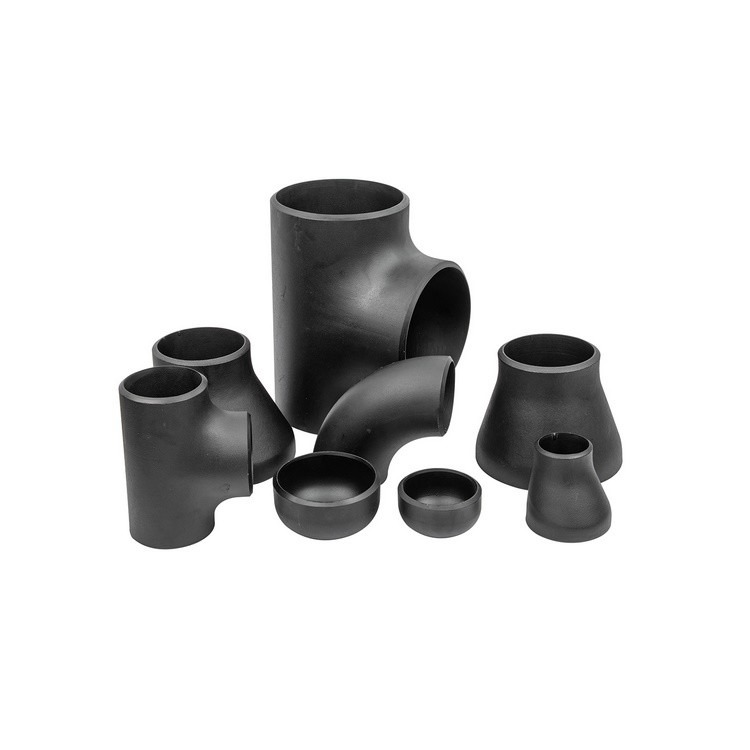Industrial piping systems are the veins of any infrastructure—responsible for the smooth, safe, and efficient transport of fluids and gases across plants and facilities. Whether it’s oil & gas, petrochemicals, power plants, or water treatment, choosing the right type of fittings can make a significant difference in the performance and longevity of a piping network.
Among various options available, Carbon Steel Buttweld Fittings have emerged as one of the most dependable choices across industries. From their exceptional strength to seamless integration and cost-effectiveness, these fittings offer numerous advantages that make them ideal for demanding industrial environments.
In this blog, we’ll explore the top benefits of using Carbon Steel Buttweld Fittings in industrial piping, understand why they are widely preferred by professionals, and what to look for when choosing the right Carbon Steel Buttweld Fittings Manufacturers or Carbon Steel Buttweld Fittings Supplier.
What Are Carbon Steel Buttweld Fittings?
Before diving into their benefits, let’s first understand what they are.
Carbon Steel Buttweld Fittings are pipe fittings that are used to connect pipes and equipment in a piping system. They are made from carbon steel and joined by welding to ensure leak-proof and high-strength connections. The term “buttweld” refers to the type of weld used to join the fitting with the pipe.
These fittings come in various types including:
- Elbows (45°, 90°)
- Tees
- Reducers
- Caps
- Crosses
- Stub Ends
Each of these plays a critical role in altering the flow direction, changing pipe diameter, branching lines, or sealing pipe ends.
Why Carbon Steel?
Carbon steel is a steel alloy composed mainly of iron and carbon. Depending on the carbon content, it is classified into:
- Low carbon steel
- Medium carbon steel
- High carbon steel
The reason carbon steel is widely used in industrial piping is due to its exceptional strength, durability, resistance to pressure, and cost-effectiveness. When combined with buttweld technology, these fittings deliver unmatched reliability.
1. High Strength and Durability
One of the most important benefits of Carbon Steel Buttweld Fittings is their impressive mechanical strength. Carbon steel can withstand high levels of internal pressure and external mechanical stress without deforming or cracking.
This strength makes it ideal for:
- High-pressure applications like oil & gas pipelines
- Long-term installations in power plants
- Heavy-duty manufacturing environments
Whether it’s transporting steam, oil, chemicals, or water, these fittings provide the durability that industrial systems demand.
2. Excellent Resistance to Corrosion and Wear
While carbon steel is not naturally as corrosion-resistant as stainless steel, it can be treated with coatings such as galvanizing, epoxy, or painting to improve its corrosion resistance. Furthermore, when used in environments where the risk of corrosion is minimal, carbon steel offers excellent longevity.
The abrasion resistance of carbon steel is another key advantage, especially in industries dealing with high-velocity flow or particulate matter, like mining or slurry transport systems.
3. Seamless and Leak-Proof Connections
Buttweld fittings are welded directly to the pipe, creating a smooth, strong, and leak-proof connection. This is particularly important in industrial settings where:
- Leakage can lead to safety hazards
- Loss of fluid or gas can be expensive
- Contamination needs to be avoided at all costs
This type of welded connection minimizes the risk of leaks compared to threaded or flanged fittings.
4. Smooth Flow and Reduced Pressure Drop
Since Carbon Steel Buttweld Fittings are welded and aligned properly with the pipe, they ensure a smooth internal surface. This leads to:
- Reduced turbulence
- Lower pressure drop
- Improved fluid dynamics
This benefit is especially critical in large-scale industrial operations where efficiency translates directly to cost savings.
5. Customization and Versatility
Another reason professionals prefer Carbon Steel Buttweld Fittings Manufacturers is the wide variety of fittings available to suit every need. You can get them in different:
- Sizes
- Wall thicknesses (Sch 10, 20, 40, 80, etc.)
- Pressure ratings
- Standards (ASME, ANSI, DIN, EN)
They are easily customizable to match the specifications of different industrial applications.
Whether you need a long radius elbow or a concentric reducer, there is always a Carbon Steel Buttweld Fitting that fits your system perfectly.
6. Long Service Life and Low Maintenance
When you invest in Carbon Steel Buttweld Fittings from a reliable Carbon Steel Buttweld Fittings Supplier, you’re ensuring years of trouble-free operation. These fittings are:
- Robust against mechanical damage
- Resistant to thermal stress
- Less prone to loosening over time
This reduces the frequency of maintenance and the risk of unexpected downtime—a major cost factor in industrial operations.
7. Cost-Effectiveness
Compared to stainless steel and exotic alloys, carbon steel is more economical, making it ideal for large-scale piping systems. Moreover, the long lifespan and low maintenance add to its cost-efficiency over time.
For companies managing miles of pipeline, cost-saving without compromising on performance is critical—and carbon steel provides just that balance.
8. Superior Thermal and Pressure Handling
Carbon Steel Buttweld Fittings can easily handle extreme temperature fluctuations and high-pressure conditions. This makes them suitable for:
- Steam pipelines
- High-pressure water lines
- Hot oil circulation systems
- Cryogenic applications (with proper grades)
They maintain structural integrity even in temperature extremes, ensuring continuous flow and system safety.
9. Compatibility With Other Materials
Carbon steel is compatible with a wide range of materials, allowing it to be used in hybrid systems where different materials are used for different sections. With proper joining and sealing, Carbon Steel Buttweld Fittings can be integrated seamlessly with stainless steel, copper, and various plastic piping materials.
This versatility opens up a lot of design flexibility for engineers and system designers.
10. Industry-Wide Acceptance and Compliance
Carbon Steel Buttweld Fittings comply with international standards such as:
- ASME B16.9
- ASTM A234
- ANSI B16.28
Because of this, they are widely accepted across industries, from oil & gas to power generation, marine, and chemical manufacturing.
Using fittings that comply with recognized standards ensures:
- System integrity
- Regulatory compliance
- Ease of inspection and certification
11. Environmentally Friendly Option
In today’s world, sustainability matters more than ever. Carbon steel is 100% recyclable, which means fittings can be reprocessed and reused after their service life ends.
This not only reduces environmental impact but also supports circular economy practices—a growing requirement in many industries.
Conclusion
In the high-stakes world of industrial operations, reliability, efficiency, and safety are non-negotiable. Carbon Steel Buttweld Fittings offer all three and much more—making them a smart, strategic choice for any piping network.
From their mechanical strength and corrosion resistance to cost-effectiveness and customizability, these fittings are engineered to meet the rigorous demands of modern industry.
Whether you’re an engineer, procurement manager, or systems designer, choosing quality Carbon Steel Buttweld Fittings Manufacturers and Carbon Steel Buttweld Fittings Suppliers will go a long way in optimizing system performance and longevity.



